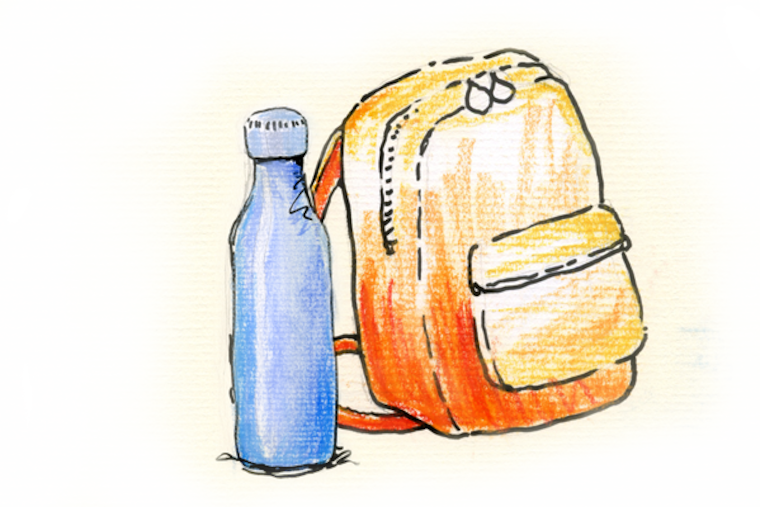What’s on Philly teachers’ back-to-school wish lists? Ticonderoga pencils and lots of copy paper.
Philadelphia teachers said they ended up spending between $200 and $500 of their own money on supplies each year.

Pencils. No. 2 pencils. Preferably quality ones. Want to know what teachers — Philly teachers — want kids to bring to the first day of school? Probably that.
Rich Delligatti, a computer teacher at H.A. Brown Elementary, no longer uses loads of school supplies. But a couple of years ago, when he taught second, fifth, and sixth grades, “the one thing I always needed was pencils. You’d lend a kid one, and it would disappear,” he said. “We never have enough of those.”
Southwark English language arts (ELA) teacher Meagan Ingerson has a specific pencil wish. “I always have the prize pencils with the plastic [coating] on them, with the lead that breaks,” she said. But “the Ticonderoga pencils are every teacher’s favorite. They last forever.”
Like so many Philadelphia School District and charter school teachers, Ingerson and Delligatti teach students from diverse backgrounds and neighborhoods with high poverty rates. In previous years, they said, at least half of their students brought in school supplies from the lists they’ve sent home at the end of the last school year.
On the first day or so of school, Philadelphia students turn over the supplies to their teacher, who corrals them together, then metes them back out to the class as the year goes on. That’s why teachers prefer uniformity — so all the kids, even ones who come to school empty-handed, receive same the materials. No one is left out. Everyone shares.
“Most of the kids do come in with their own stuff,” said Delligatti. “I know that’s not the case in all schools.”
No matter what, teachers have to supplement.
After the first few weeks of the school year, Philadelphia School District teachers receive a one-time $100 allotment for supplies. By that point, teachers have already set up their classrooms, Velcroed posters to the walls, added bulletin board borders, stocked up their own desks, purchased extra snacks, and done whatever else they needed to do to get first-day-of-school ready.
In other words, they’ve already spent the money.
“That $100 does not go very far,” said Ingerson. “If you’re teaching kids in high-poverty neighborhoods, a lot of times your supplies will just go missing because the students don’t have them at home. You don’t blame them for that, but it is challenging, just keeping things in the room. You end up doing supply management all the time.”
Schools tend to leave principals in charge of supply procurement and distribution. By many teachers’ accounts, their schools’ leaders do a good job.
“My principal keeps us pretty well supplied,” Delligatti said, “She gives each teacher a case of paper at the start of the year, and she’ll resupply it.”
The supply list Ingerson sends home at year’s end always features photos, since families in her school’s catchment speak nine different languages. She wants to make sure everyone understands what to bring in.
Typical lists for Philadelphia elementary schoolers include old-school back-to-school items like composition books, colored markers and crayons, plastic folders, kids’ scissors, glue sticks, and construction paper, as well as teacher essentials like dry-erase markers, paper towels, tissues, hand sanitizer, Clorox wipes, Post-its, staples, and copy paper for the endless lesson handouts.
Veteran teachers remarked that earlier in their careers, they spent more on supplies. “Younger teachers end up spending more than older teachers, just because you’re always adding to your repertoire. Once you have a lot of stuff, you don’t have to do it anymore,” said Lance Lukasiak, an English and social studies teacher at Independence Charter School who has been teaching since 2001. “I find myself spending less and less every year.”
Nonetheless, Philadelphia teachers said they ended up spending between $200 and $500 of their own money on supplies each year to get their jobs done.
“It’s such miscellaneous stuff,” Lukasiak said. “Sometimes you don’t realize what it is. You go buy it, a little bit at a time, and suddenly, it adds up.”
Some teachers said they use the website DonorsChoose to write grant requests to crowdsource funds for projects, supplies, and technology. Others create Amazon wish lists, send requests home with students, seek assistance from parent-teacher associations, or simply ask colleagues if they can spare construction paper, markers, pencils, tissues, and the like.
Many end up using their own resources — and resourcefulness.
“I found this website where I could buy pencils at 10 cents apiece. They had such-and-such’s wedding written on them. They were extras, thrown into a box,” said Delligatti.
Said Lukasiak, “We’re all savers. We’ll do anything to help our kids.”